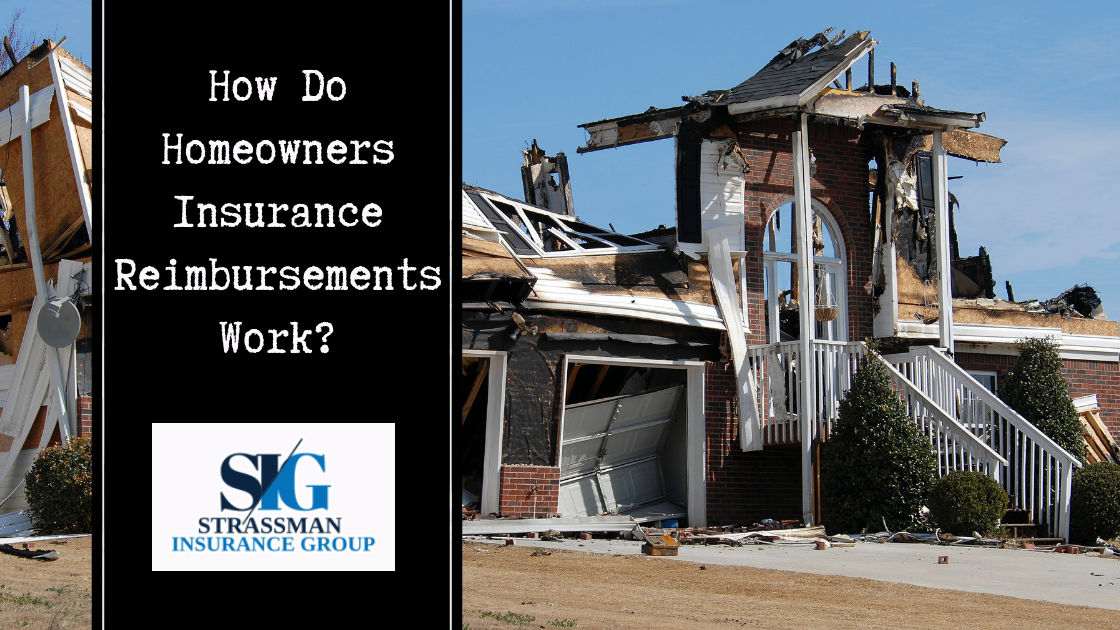
16 Jan How do Homeowners Insurance Reimbursements Work?
Selecting a homeowners insurance policy that is right for you can be a daunting task. To make sure that you are choosing wisely, brush up on the homeowners claim process, steps you should take following property damage and the different types of reimbursement available. With a trusted provider at your side, you and your family will be able to sleep well, knowing you made the right choice.
How the Home Insurance Claim Process Works
Understanding how the home insurance claim process works will make dealing with the unexpected easier. It is important to speak to your insurer, as every carrier can handle claims differently. However, you can expect that most will include these basic steps:
- Report the claim – You should reach out to your provider as soon as possible. The sooner it is reported, the sooner the outcome of your claim will be determined and paid out.
- Inspect the damage – Your provider will call you to discuss all of the details surrounding the event and the damage that occured. They will also be able to inform you what is and is not covered, and will send an inspector.
- Document your losses – Hopefully, you have photos or video taken prior to the damage, but be diligent in documenting everything following the damage. This includes both the interior and exterior of your home, and the items in it.
- Save your receipts – If you have approval and make temporary repairs, need temporary housing or have any other expenses due to the damage, keep all receipts. Your insurer will likely ask for them to help you claim additional funds.
The time frame for resolving a claim and receiving pay can vary. Turnaround time can also be impacted by the amount of claims an insurer has coming in. This is especially true during hurricane or tornado seasons, when more people than usual are filing claims. Once a provider has confirmed that the damage or loss is covered, many people recieve a check the day of, or soon after. Again, however, this will take considerably longer in the case of a disaster affecting hundreds of homes.
Before you Start the Home Insurance Claim Process
Never jump into the process of filing a home insurance claim. You should first assess the cost of the damage to your home or property. If the damage is not significant, it may be more cost-effective to get a repair estimate and pay for the work yourself. This is important to consider, because whether or not a claim is small, your home insurance rates are likely to increase once you have filed. You will also have to pay a deductible prior to insurance paying out a claim, which could be more than the cost of the repair. Take some time to do the math, compare costs and see which option will benefit you the most.
Whether or not you intend to file a claim, be sure to take photos and/or video of the damage as soon as possible. Capture as much information and take note of any important details. This will allow you to total up repair costs – including cost of materials, labor and the value of items that you lost. In some cases, you may need to add money for temporary housing, a rental car, lost work and more. After notifying the insurance company, you may ask how you should proceed to prevent additional damage. They will advise you whether you can or cannot take action, and if you are able to make the repairs, or if a contractor should. As a rule of thumb, do not do anything without first notifying your insurer.
Replacement Cost vs. Actual Cash Value Reimbursements
During your search for a home insurance policy, you will likely be offered one of two types of reimbursement. They are different because of the way that insurance companies calculate them. The most significant reason to consider each carefully is that they have drastically different premiums. Our blog post on how to cut homeowners insurance cost provides some valuable advice.
Replacement Cost Reimbursement – Known as an out-of-pocket replacement cost, this policy covers the full price of repairs, up to the full cost to rebuild your home. While ideal, the drawback of this policy is that the premium is very expensive. In fact, it is unaffordable for most people.
Actual Cash Value Reimbursement – With actual cash value reimbursement, you are payed the determined value of the damaged property. This means the depreciation of the property prior to being lost is factored in. Essentially, you will not get a brand-new roof to replace one that only had five years left in it. However, the premium for this policy is much lower.
Choosing which homeowners insurance policy is right for you is easier with an insurer you trust. At Strassman Insurance Group, our agents are ready to help you find a solution that suits your family’s budget and needs. Contact us today to schedule an appointment.


